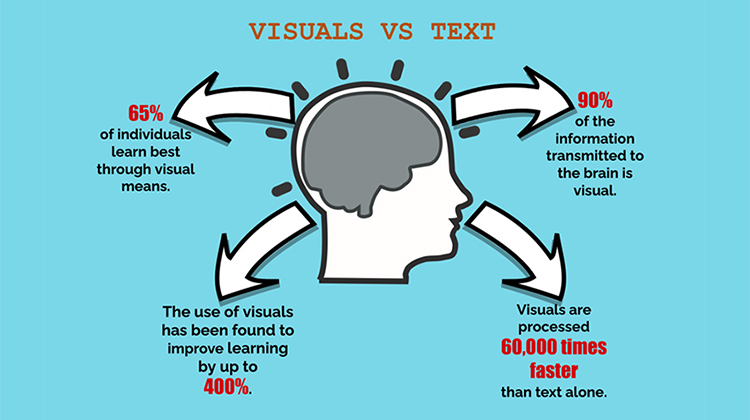Gen Z are Visual Learners

The average attention span has decreased by 25% in recent years and 65% of students learn best visually.
It’s down to social media, text is losing kids’ interest in favour of video-based media which hold their attention and help with retention.
Information is bite sized and delivered in volume, with Snapchat’s 10-second story limit, TikTok’s 60-second videos and Netflix releasing 90-minute films, Gen Z’s preference in processing information visually goes hand in hand with short attention spans.
There is little separation between the online and in-person experience for Gen Zers, that means training, development and learning processes must adapt and be heavy on the use of diagrams, infographics, pictures, mind maps, and other visual tools.
A study testing ability to recall information showed that after three days, participants retained 10–20% of written or spoken information but 65% of visual information. The brain is able to process images that last for just 13 milliseconds and our eyes are able to register 36,000 visual messages per hour.
Dr Penny Trayner, a Paediatric Clinical Neuropsychologist says, “You may have read in the press that theories about the dominance of learning styles have largely been debunked as an oversimplification. But the good news is that memory theory and research tell us that ‘richly’ encoded memory traces are much more likely to be retained, and multi-modal learning is a way of more richly encoding information. See it, discuss it, experience it.
“In reality, we likely all have strengths and preferences for the way we learn, and the best way to learn something varies from task to task. Taking a broad approach and making education as engaging as possible, targeting multiple senses in different ways, creates the best possible conditions for learning.”
A piece of research by VideoScribe says that visual learning methods are now 83% more effective than text alone, the use of visuals has been found to improve learning by up to 400% and that’s because 90% of the information transmitted to the brain is visual.
The devices children use for the internet differ vastly depending on their age, with a new study revealing that all children aged between 3–15 used a tablet computer more than any other device.
Computer tablets are a very visual way of interpreting information, with a large screen that fits within the user’s hand and almost exclusively relying on imagery and graphics in the way they convey information.